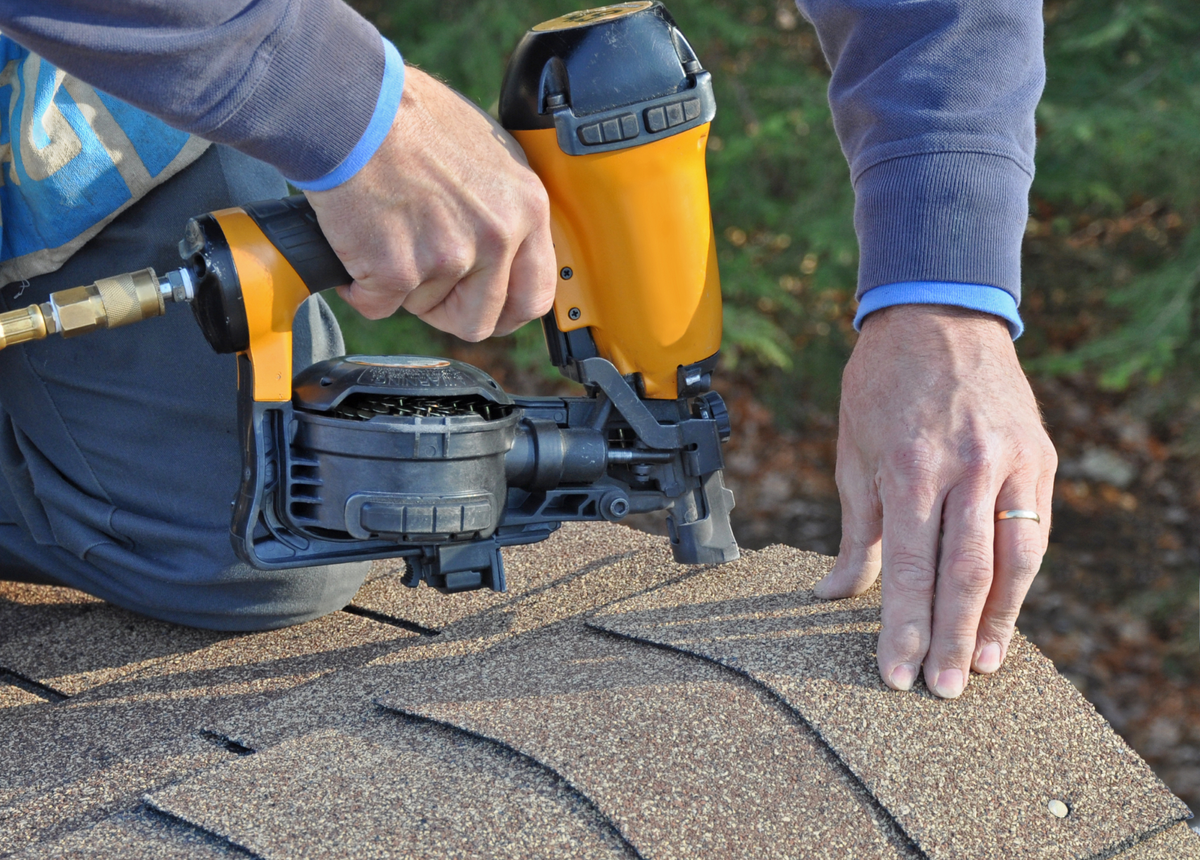Maybe you’ve been installing roofs for 25 years, maybe 25 minutes. Whichever the case, having roofing experience doesn’t always make you a master of what the best asphalt shingles are.
The market changes FAST. The best shingles from a few years ago may be less respected these days. And a shingle brand that you thought was complete sh!t before might now be the right choice.
That’s what this guide’s for! It’s the latest industry info to inform your roofing business strategy. What works. What lasts. Which shingles’ll make you money, so you can keep your margins low and your quality of service high.
This guide breaks down the two big choices on steep-slope jobs: architectural shingles vs asphalt shingles (AKA dimensional / laminate vs regular 3-tab). Plus quick brand highlights, sales tips, and where the best rated asphalt shingles shine the most.
Read on, compadres.

First, the big question: 3-tab or architectural?
3-tab shingles
Three-tabs are the “traditional” asphalt shingles you think of from years past.
- Flat, uniform in appearance. Lightweight.
- Lower material cost. Easy to stock.
- Shorter service life in most climates.
- Best used on budget jobs, sheds, or flips.
Learn more about the benefits of 3-tab shingles and when to choose ‘em.
Architectural (dimensional) shingles
Architectural shingles are more modern asphalt shingles, the go-to for most.
- Thicker laminated construction. Layered shadow lines.
- Stronger wind warranties. Generally better nail-zone tech.
- Longer service life and overall superior curb appeal.
- Best used on most residential reroofs and for roof upgrades.
Bottom line is: architectural wins.
If the homeowner asks what the best rated asphalt shingle is, or at least the best choice for their home, your default is likely an architectural line from a top brand. Longer-lasting, fewer headaches, more referrals.
What makes the best shingle in 2026?
Lotta factors to consider, but some are more important than others. Keep this quick checklist handy for when you spec, price, or present to homeowners:
- Wind coverage. Many architectural lines have up to 130 mph limited wind warranties when installed to spec. Some systems even go higher with the right accessories.
- Algae protection. Black-streak resistance matters a LOT in hot n’ humid areas.
- Nailing zone. Wider nail targets speed up your crews and reduce the risk of smashed thumbs. (Which also means your non-injured crew doesn’t need to pick up the slack so often.)
- Impact rating. In hail country, Class 3 or Class 4 can keep claims and insurance premiums lower.
- System warranties. Matching underlayments, starter, hip-ridge, and vents often add up to better warranties. Best to sell the full system, not just the shingle.
- Local supply. The “best” shingle is the one you can get this week in the color the homeowner really wants.
It’s tempting to have one or two go-to shingles that you use for every job, but no shingle does it all, and you’ll find some jobs where it doesn’t fit. It's wise to have a nice broad selection to pick from.

Shingle brand snapshots
You won’t find us endorsing any specific brand, but here are a few of the most popular and commonly used ones on the North American market. Take a few minutes to read up on ‘em. You’ll make better use of the right shingle types and save money in the long run.
Wanna see a direct comparison? See top shingle brands face off in this chart.
GAF Timberline
- Popular architectural line with big nail zone (StrikeZone)
- Accessory-based WindProven program
- Trusted name, broad color range, strong contractor network
- Where it fits: Your bread-and-butter reroofs across the U.S.
CertainTeed Landmark
- Heavier feel with a deep color palette
- Algae-resistant options and solid wind ratings
- Has a premium layered look
- Where it fits: Upsell in classy-looking neighborhoods.
Owens Corning Duration
- Well-known SureNail strip tech
- 130 mph wind rating when installed right
- Approachable with good marketing assets
- Where it fits: General reroof for folks who love the brand.
Malarkey Legacy, Vista, Highlander
- Polymer-modified asphalt
- Class 4 impact options with algae resistance
- Known as “tough” with hail belt credibility
- Where it fits: Storm markets and quality-first customers.
Atlas Pinnacle Pristine, StormMaster
- HP42 wide format with a nailing sweet spot
- Known for Scotchgard algae warranty
- Great wind warranty up to 130 mph
- Where it fits: Humid regions where algae is an issue.
Keep all these shingle types, or ones like them, in your back pocket. The shingle gets you in the door, but you’re the one who closes the job.
Architectural vs 3-tab: what to say to the customer
When the homeowner asks, “Why should I pay more?” Here’s what your guys should say.
- “These thicker laminates lock down better. These ones have 130 mph coverage. So on those windy nights, you don’t have to stress about your roof shingles goin’ for a stroll.”
- “These dimensional lines throw these nice shadows. It makes the roof look richer and cleaner. And that makes your home worth more to future buyers.”
- “We see longer service life and better resale with architectural shingles. They cost a bit more today, but they’ll save you money later. Fewer repairs and replacements.”
If the customer still wants 3-tabs, that’s fine too! Just set expectations and document everything.
And never forget to offer good-better-best options as part of your full proposal. 3-tab? Architectural? Or architectural with impact resistance? Give homeowners all the info upfront and let ‘em choose how long and how strong.
Asphalt shingle sales tips
- Lead by solving specific problems. Wind, algae streaks, hail, heat. Match the shingle to the area’s biggest problem, or whatever the homeowner is most worried about. Back it up with a helpful “manufacturer and product info” page in your digital proposal.
- Explain the nail zone. Homeowners don’t know what the hell a “nail zone” is. Show them the strip on a sample shingle and explain why it results in a cleaner install.
- Use algae photos. Before & after shots really sell algae resistance benefits like Scotchgard.
- Only share what matters. In hail zones, talk about Class 3 vs Class 4. Outside of hail zones, don’t bother with it at all.
- Know the warranties. Don’t make homeowners do all the leg work. Keep your warranty docs and product info in your CRM, easy to pull at a moment’s notice. When homeowners ask questions, it’ll take 30 seconds to send the info over, and they’ll love you for it. Great service like that is how you score great reviews and referrals.

Win more asphalt jobs with less chaos
Pair your best asphalt shingles with clean systems and kickass service. Roofr helps your business set that up by keeping you organized, efficient, and professional.
- Build perfect estimates from fast, accurate measurement reports.
- Smart proposals that pull in brand spec sheets, the latest pricing, and more.
- Built-in material ordering that integrates directly with your supplier.
- Set-and-forget CRM workflows to manage leads, jobs, emails & SMS, you name it.
If you want to move faster, wow more customers, and make your process smoother from quote to close, we’re here to help.


